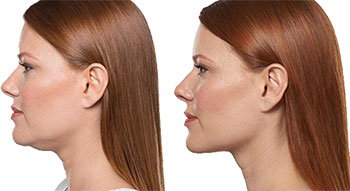
The human face is the most important area that defines a person, and since it is the most visible area that attracts the most attention, people pay the most attention to these parts. There are many areas on the human face, and even small unpleasant ugliness in them can upset a person. Among these regions, nose, ear, eyebrow and eyelid are examined under separate headings. The remaining cheek, chin, lips, forehead and neck areas are treated together and generally with similar methods.
Face and Neck Aesthetics Applications

As we age, changes occur in all layers of our skin. While there is thinning in the superficial layers and a decrease in the glands, rash, and color change, in the deep layers there is a thinning of the elastic fibers and tissues that provide support and tension. As a result, symptoms such as dryness and hardening of the skin, looseness, drying, wrinkle formation, sagging and surface staining occur. Deeper, thinning of the subcutaneous layers, cell loss, reduction of fat tissue, and even deeper bone thinning and melting occur. These changes cause depressions and shrinkage in the facial area, as well as shrinkage in the chin. Therefore, it is necessary to seek treatment with different methods for different layers and the various disorders that occur in them. For this reason, it would be appropriate for people who have the knowledge and skills to perform these different applications in an important area such as the face and who know which method will provide maximum benefit to the person, to undertake this procedure.
There are so many things to be done aesthetically to the face and neck area: these include tightening loose and sagging tissues, skin removal for skin laxity, abrasion for upper lip wrinkles, elevation for the eyebrow area, removal of forehead wrinkles, frowning eyebrows, bags under the eyes, upper eyes. From plastic surgeries such as correcting sagging eyelids to botox and filler applications. Fat tissue transfers may require many different applications, such as skin peeling (ablative) or laser procedures to tighten the deep layers. Enlargement of shrunken chin areas may come to the fore during facial aesthetics. The physician should determine which method will provide the maximum benefit to the person and apply it accordingly. Although the patient's wishes are important, the doctor's experience will reveal which method will be more useful. Although filling application or regional stretching, recovery procedures or rope hanging methods are generally sufficient in the early stages, in more advanced cases, further interventions become inevitable.
Mid-face lift – Mid-face lift

Although in some people at very advanced ages, in many people, the cheek loosens downward and forward due to the weakening of the supporting tissues and the effect of gravity. This occurs as accumulation towards the sides of the lips and deepening of the line in this area. In order to correct this appearance, this sagging can either be corrected by a method called mid-face lift surgery or, in the simplest way, by filling the deepened line on the sides of the lips. Since mid-face lift surgery is performed through the hair, lower eyelid area and inside the mouth, the scars are hidden. Since no skin is removed in the mid-face lift surgery, no scar is left on the skin. This is not a skin lift surgery but a recovery surgery. It is more suitable for middle-aged people. When necessary, it can be preferred to reduce the depth of the nose-lip line and to tighten the cheekbone area and under the eyes. If there is weakness and collapse in the facial area, better results are obtained if reinforced with fatty tissue injections or filler applications.
Full Face Lift

In more advanced cases, looseness, sagging and wrinkles in the facial skin and subcutaneous tissues increase and facial tightening procedures begin to become insufficient. In this case, it is necessary to both eliminate the skin laxity and move the subcutaneous layers to the areas where they were in their old, youthful periods, and this is only possible with face lift surgeries. Classically, an incision is made extending from the front of the ear to the back of the ear, the skin is pulled towards this part and the excess skin is removed. Our goal in this surgery should not only be to stretch the skin but also to loosen the tissues and move the sagging tissues to their former places with the effect of gravity. The procedure for this is to stretch the subcutaneous carrier membrane layers along with the skin (superfascial musculo-aponeurotic fascia). Deep tissue tightening is a procedure that must be performed to eliminate swelling and sagging in the lower cheek areas. During face lift, these areas are often included in the surgery to eliminate the laxity under the chin and neck. Many patients want their temple and eyebrow areas to be included in the surgery and rejuvenated in these areas, so face lift, neck lift and eyebrow lift surgeries are performed as a single surgery. In addition, fatty tissue filling can be performed under the eyes, around the edges of the lips, between the eyebrows and other sunken areas of the face. Eyebrow Lift and Forehead Lift surgeries are frequently performed independent of facial surgery.

In cases that are not too advanced, facelift can be performed with the short scar method, and the cheeks and upper parts of the neck can be corrected with this procedure. In this surgery, the scar starts in front of the ear and turns very briefly behind the ear. The surgical scar is necessarily lengthened to correct the sides of the eyebrows and the lower parts of the neck.
One of the most important changes that upset people is the fine wrinkles that form in the facial area over time. In order to eliminate these, superficial ablative laser application (which peels off the upper layers of the skin) or dermabrasion can be applied during facial surgeries. In this way, the facial area is both lifted and cleared of wrinkles; face lift surgeries alone are insufficient to eliminate wrinkles. Although face lift surgeries can be performed in all seasons, superficial procedures such as laser and abrasion are not preferred in sunny seasons.
Recovery Time After Treatment

Facial surgeries generally require a one-day hospital stay. This is followed by a few days of rest at home, after which the patient can easily take care of his own needs at home. Since it is performed on the face and often together with eyelid aesthetics, some bruising and swelling (edema) around the eyes should be expected. These changes last for about a week, and if stitches that need to be removed are used, they will be removed within a week. Patients who want to travel are allowed to travel after 3-4 days by using self-dissolving stitches.
What is face lift surgery?
When it comes to facial aesthetics, many things come to our mind; Sagging face, wrinkled skin, lack of texture, wrinkles, blemishes and many other things are encountered in facial aesthetics. The most commonly known and oldest method, face lift surgery, is still used together with neck lift and forehead lift for large deformities and major disorders. Face lift surgeries and neck lift surgeries have improved and changed a lot compared to the past. Much more successful results are obtained compared to the previous period.
Are scars from face lift surgery visible?

Face lift surgeries; It is made with a very thin incision that passes in front of the ear and goes behind the ear. Sometimes it is not possible to see their scars after the surgery.
What should be considered in face lift application?
The main thing in face lift surgery is not to stretch the facial skin and provide tension. It is important to shape and rejuvenate the face in face lift surgery. We not only tighten the skin, we move the loosened, sagging tissues under the skin to their old places, where they were in youth. The skin is also stretched in the same surgery. A similar procedure is performed on the neck and neck muscles, providing tension and correction in this area, extending to the bottom of the chin.
Can fillers be applied along with face lift surgery?

In addition, some filler applications and fat injection applications can be performed simultaneously with face lift surgery to correct the deformities that have occurred on the face over the years. Face lift surgery is supported by filling with fat injection or tissue transfer, especially in the cheekbones, lower areas of the cheekbones, the lines next to the nose and lips, which we call the nasolabial groove, and the deepened lines.
At what age should face lift surgery be performed?
There is no exact age for face lift surgery. It should not be considered as a surgery to be performed at very advanced ages. Face lift surgeries can be performed very conveniently starting from middle age and enable the person to experience a more desired face shape for the next period of his/her life.






